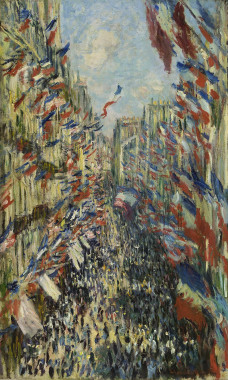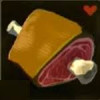The Rue Montorgueil in Paris. Celebration of June 30, 1878 by Claude Monet (1878)
The Rue Montorgueil, like its twin painting The Rue Saint-Denis (Rouen, musée des Beaux-arts), is often thought to depict a 14 July celebration. In fact it was painted on 30 June 1878 for a festival declared that year by the government celebrating “peace and work”. This was one of the events organised for the third Universal Exhibition in Paris a few weeks after it opened, and intended to be a symbol of France’s recovery after the defeat of 1870. As well as demonstrating nationalist enthusiasm, the celebrations of 30 June 1878 were also an opportunity to strengthen the position of the Republican regime, still fragile only a few months after the major confrontations of 1876-1877 between its supporters and the conservatives. It was only two years later, in 1880, that 14 July was designated the French National Day.
This painting proposes a distanced vision of an urban landscape by a painter who did not mix with the crowd, but observed it from a window. The three colours vibrating in Monet’s painting are those of modern France. The impressionist technique, with its multitude of small strokes of colour, suggests the animation of the crowd and the wavering of flags. This allowed the American historian Philip Nord to write that it perfectly fits the “republican moment” marking the emergence of a democratic society and its roots in contemporary France. With this painting, Monet revealed a hidden aspect of modernity, while simultaneously achieving the work of a “reporter”.


Add comment